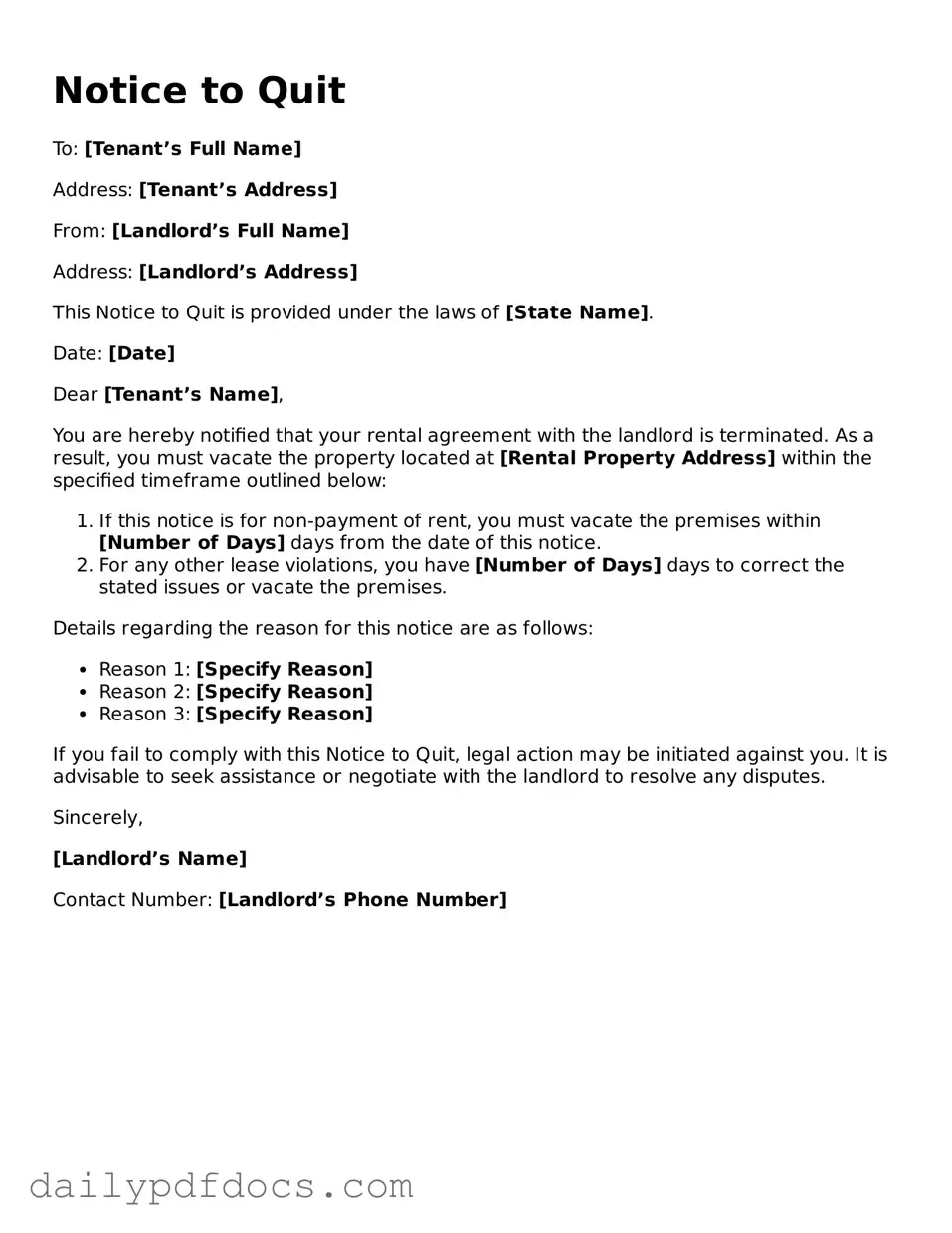What is a Notice to Quit form?
A Notice to Quit form is a legal document that a landlord provides to a tenant when they wish to terminate a rental agreement. This notice informs the tenant that they must vacate the property by a specified date. It serves as a formal communication and is often the first step in the eviction process if the tenant does not comply.
When should a landlord use a Notice to Quit?
A landlord may issue a Notice to Quit for various reasons, including non-payment of rent, violation of lease terms, or the end of a lease agreement. The timing of this notice can depend on state laws, which often dictate how much notice must be given based on the reason for termination.
What information should be included in a Notice to Quit?
Essential information in a Notice to Quit includes the tenant's name and address, the date the notice is issued, the reason for termination, and the date by which the tenant must vacate the property. It may also contain details about any outstanding rent or lease violations, if applicable.
How much notice must be given to tenants?
The required notice period can vary significantly by state and the reason for the notice. Some states require a 30-day notice for non-payment of rent, while others may require only a few days for lease violations. It is crucial for landlords to check their local laws to ensure compliance.
Can a tenant contest a Notice to Quit?
Yes, tenants have the right to contest a Notice to Quit. They can do this by responding to the notice, negotiating with the landlord, or by seeking legal assistance. If the case escalates to court, tenants may present their defenses during eviction proceedings.
What happens if a tenant does not comply with a Notice to Quit?
If a tenant fails to vacate the property by the date specified in the Notice to Quit, the landlord may initiate eviction proceedings. This typically involves filing a lawsuit in the appropriate court. The court will then determine whether the eviction is justified based on the evidence presented.
Is a Notice to Quit the same as an eviction notice?
No, a Notice to Quit is not the same as an eviction notice, although they are related. The Notice to Quit is the initial step that informs the tenant of the landlord's intention to terminate the lease. An eviction notice is issued after the tenant fails to comply with the Notice to Quit and legal action is taken to remove the tenant from the property.
